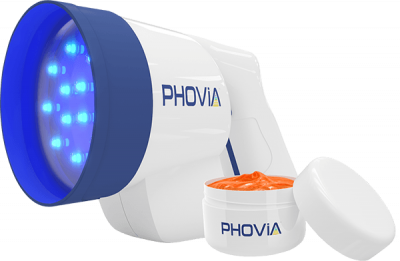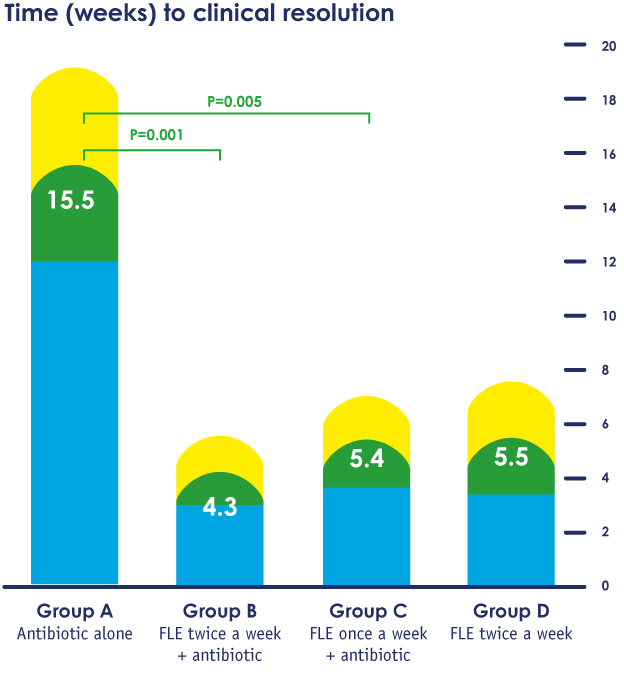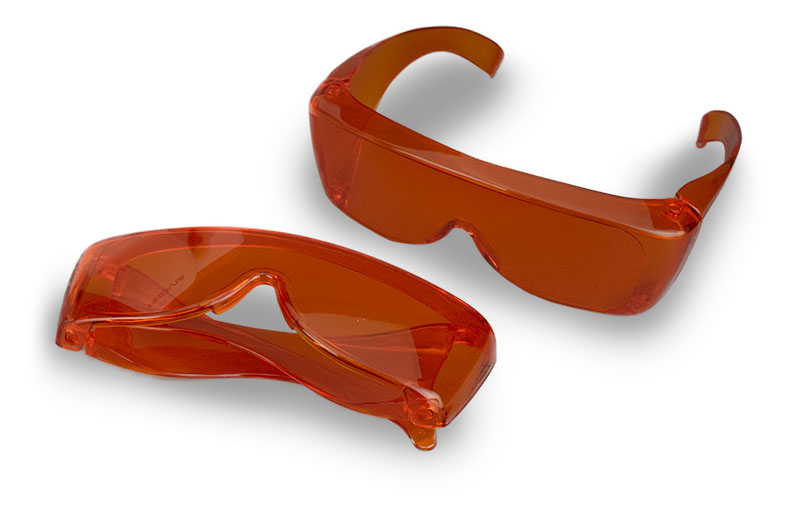Phovia® is healing with the speed of light.

Phovia LED Lamp & Gel
Phovia works with the skin’s natural healing response to help skin and wounds heal more quickly.
The Phovia kit has two components:
- The Phovia LED Lamp, which emits blue, low-energy light
- The Phovia Gel, which is a unique topical photoconverter activated by fluorescent light energy (FLE)
The combination of light and chromophore gel helps speed up cell regeneration and growth. This leads to a quicker, and more complete, healing time.1
See how fast and easy Phovia is to use
When & Where to Apply Phovia
Phovia treatment can be used to help heal canine, feline, and equine dermatological conditions including:
- Surgical incisions
- Perianal fistulas
- Interdigital furunculosis
- Superficial and deep pyoderma
- Open or traumatic wounds
- Cracked heels
- Scratches
- Summer sores*
*As part of or in support of treatment protocols or program.

Phovia can be used with other treatments
Phovia can work in conjunction with additional at-home treatments for the specific skin condition as required and recommended by the veterinarian. Phovia treatment has been proven to speed healing time when compared to antibiotic and topical treatments alone.2
The effectiveness of Phovia used alone or in combination with systemic antibiotics to manage deep pyoderma has been demonstrated in a prospective, blinded, randomized controlled trial.3
- Dogs treated with combination of Phovia twice a week + systemic antibiotics achieved clinical resolution in 4.3 ± 1.3 weeks compared to dogs treated with only systemic antibiotics 15.5 ± 3.5 weeks.
- Dogs treated with combination of Phovia once a week + systemic antibiotics achieved clinical resolution in 5.4 ± 1.7 weeks.
How Phovia is different than laser therapy
Traditional therapy laser requires very precise positioning to ensure optimal beam delivery intensity and often covers a smaller treatment area.4 In addition, lasers require more frequent and longer treatments, up to 15 minutes each.
While most light therapy systems are limited to a single wavelength, addressing at most one level of the skin, the Phovia chromophores release FLE at multiple wavelengths, giving multiple beneficial cellular responses simultaneously.
The safety of Phovia
Despite exerting a biological effect, the Phovia system is generally very safe for users and pets when used according to instructions or as directed.5,6 However, any intervention with an impact on an animal’s physiology can have side effects.
Phovia is not indicated for use in photosensitivity conditions (where additional light energy may trigger recrudescence), such as porphyria or medication with photosensitizing agents (particularly antimicrobials in the tetracycline class, clofamizine, dacarbazine, dapsone, griseofulvin, coal tar, or topical retinoids).
When they occur, side effects could include hair color change, erythema that regresses within 6-12 hours, skin hyperpigmentation, and/or transient pain at the wound site.

Benefits of Phovia to the clinic
- Accelerate natural skin healing for most leasions with Phovia's clinically proven fluorescent light system.1
- Direct income from use of the system
- Qualified veterinary technicians or nurses can administer the light therapy
- Regular appointments mean more close monitoring of the pet’s progress
- Minimizes antimicrobial use, which helps clinics abide by the World Small Animal Veterinary Association (WSAVA) Antimicrobial Stewardship principles
Benefits of Phovia to pet owners
- Visibly faster skin healing
- Less medication required, which can result in less expensive protocols with less struggling to get tablets in or creams on and increased owner compliance
- Non-invasive, fluorescent light therapy
- Pet freed from distress of uncomfortable skin, up to twice as fast
- Happier pet, sooner!
References
- Marchegiani, A., et al. (2021) The Effectiveness of Fluorescent Light Energy as Adjunct Therapy in Canine Deep Pyoderma: A Randomized Clinical Trial. Vet Med Int, 6643416.
- Apostolopoulos, N. and Mayer, U. (2020) Use of fluorescent light energy for the management of bacterial skin infection associated with canine calcinosis cutis lesions. Vet Rec Case Rep, 8,e001285.
- Marchegiani A., et al. (2017) The Klox Biophotonic System, an innovative and integrated approach for the treatment of deep pyoderma in dogs: a preliminary report. Vet Dermatol; 28: 545.
- Redondo, M. S. (2019) Veterinary laser therapy in small animal practice. 5M Publishing.
- Marchegiani, A., et al. (2019), Fluorescence biomodulation in the management of canine interdigital pyoderma cases: a prospective, single‐blinded, randomized and controlled clinical study. Vet Dermatol, 30: 371-e109.
- Salvaggio, A., et al. (2020) Effect of the topical Klox fluorescence biomodulation system on the healing of canine surgical wounds. Veterinary Surgery, 49:719-727.